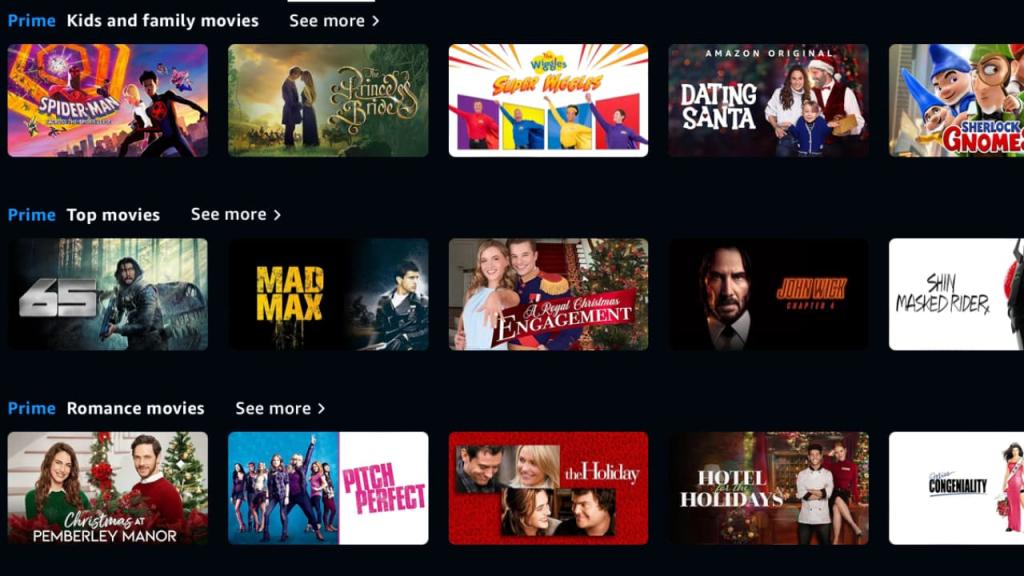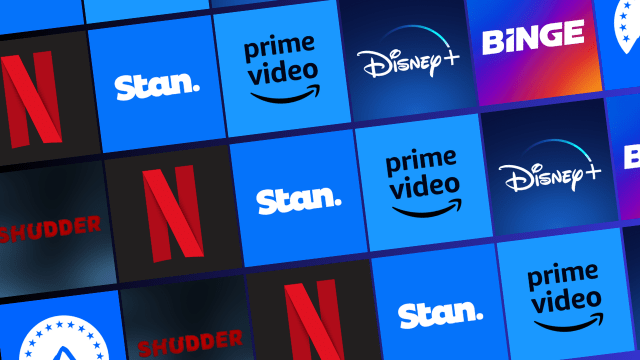One of the biggest barriers to enjoying the streaming shows we want to watch certainly isn’t lack of content – but how well we can access them on streaming apps.
I really don’t watch much in the way of free to air TV any more. Possibly that’s because I’m not that much of a sports watcher, or possibly it’s because I never got stung by the reality bug that seems to infest so much domestic TV production these days.
Of course, there are exceptions – anyone who doesn’t love Bluey is clearly a wrong ‘un – but when I sit down in front of a TV these days, more than 99% of my watching hours are spent in front of streaming apps of some kind.
There’s an immense wealth of programming out there, ranging from the new and exciting to vast libraries of legacy content. Not quite all of it – I’m still waiting for the BBC to licence out the Doctor Who archives properly – but easily more than anyone could reasonably watch without undertaking a Ludovico-style watching pattern. Alex DeLarge’s experiences there suggest that this might not be the optimal way to enjoy your streaming TV fix.
There’s plenty of complaining online about services not having everything, or the way that show access has fragmented over so many services, and that’s not an unreasonable complaint, but to be clear upfront, that’s not what I’m going to talk about here.
What surprises me is that I see less complaining about the actual apps and services themselves.
Streaming isn’t a new concept by any stretch of the imagination, so why are so many of the apps that we’re giving our attention – and often a fair chunk of our money – to so particularly poor?
Here’s five factors that really give me the irrits about the modern streaming experience.
One: Really Bad Search

Every few years, somebody comes up with a new way to present a search function on a streaming app, whether it’s within the app itself, or even the promise of a “universal” search across services.
Every few years, I’m inevitably disappointed by them, because they’re universally poor at actually surfacing good or relevant content, even when it’s on the service in question.
If I’m in the mood for a Jackie Chan flick – because they’re generally simple light-on-the-thinking-heavy-on-the-comedy-action fare – then let me find his works on your streaming app!
More than once I’ve found one or two films, settled in to watch those, and on the conclusion been greeted by one of those “You may also like” menus that includes movies that never surfaced in the initial search.
It’s exacerbated, naturally enough if you’re using a streaming app built into a smart TV, because good luck getting a consistent (or sometimes even all that responsive) keyboard experience out of those versions of apps. Voice search doesn’t help much there at all either, I find, because while my Australian accent isn’t that thick, it’s certainly enough to confuse the hell out of most search apps.
This is not good enough, by far.
Two: Weird carousel choices

There’s no ISO standard that I’m aware of for streaming media apps, but they’ve all generally settled on a carousel style arrangement for showing you the content they’ve got on offer. If you’re doom scrolling through your selection choices before inevitably watching The Princess Bride for the millionth time (no judgement), you’ll go through their category choices, maybe a few seasonal or topical picks and whatever that service has as “new” to spruik to you.
That’s all well and good; humans are visual creatures and it can provide a simple shortcut to finding the content you want to watch.
Or at least it should – but a few too many services take some really weird leaps when it comes to the visuals they use to show off particular shows or movies.
Netflix is really bad for this, but they’re far from the only offenders, substituting the iconic movie posters – you know, the ones you know and that you’d use to easily visually identify a film in most circumstances – for a random artwork or still from the movie instead with the logo oddly superimposed.
Special bonus points go here to Amazon Prime Video, which seems to have the very special skill of finding movie posters from completely different languages – and sometimes title scripts – than their original showing. I guess it’s a good way to see how films are presented in other parts of the world… but it’s not a good discovery mechanism if you’re not in those parts of the world, really.
Is the idea with alternative art meant to be that it’s more eye-catching because it’s a “new” way to present the film or show?
It doesn’t work well; I’ve lost track of the number of times I’ve skipped over something I might have watched because the “new” image isn’t the familiar representation I might expect. What’s more, it’s often not a good way to represent what a show or movie might actually be, which means entirely new viewers are either going to get content they don’t want, or miss out on content that they do.
Three: Poor ad placement

Obviously, not every single streaming app and service has ads, though it’s fast becoming a popular idea ever since Netflix thought it might be a new revenue stream and/or way to push folks towards pricier tiers.
You can now get Binge with ads, Amazon’s bringing it into Prime Video next year and all of the free-to-air streamers have ads, though at least in that case I can understand it because it’s their primary source of revenue, save for the ABC… where you’ll still get trailers and promo spots before you watch content.
Maybe ads are the price we pay for cheaper or free to view streaming content, but does that price have to be so spectacularly badly implemented?
Nobody really likes ads, even the ones that try to be “cute” or “memorable”, and there’s a very solid problem right off the bat with the tediously repetitive nature of the way many ads get repeated ad nauseam. I’ve started to play games with those ads, boiling them down to their essence by yelling “Get on the booze!” for beer ads or “Drive Cars!” for car ads and so on to amuse myself, but that game can only go so far.
What’s more infuriating is how poorly so many streaming services that include an advertising component actually place those ads, even within shows that had actual ad breaks because they were originally broadcast TV shows. Fade to black, ads incoming.. but no, it’ll do it 45 seconds later into a scene and in the middle of a sentence, instead.
It’s a truly poor way to watch anything, and very clear evidence of how programmatic all of this stuff is handled. Surely a little AI could be thrown at the problem to identify the more natural breaks – whether they’re old-school TV style fades, or even just scenes ending – and put ads in that way?
Four: Not telling me when a program’s being pulled

The reality of the streaming age is that shows and movies come and go as different rights deals are struck, or in some cases on the whims of studios that hold full rights but maybe don’t want to pay residuals to actors. Why yes, Disney+, I am looking at you.
It’s a fact of streaming life, but it truly bugs me that in far too many cases, it’s never made clear at all whether that show you spot one day will be there the next.
There’s absolutely no question that the streaming networks know how long they’ll have the rights to content for, because some tightly-worded contracts – along with sacks of cash – will have been handed over in order to secure them.
But to us, the paying customers, they’re mostly obfuscated, and deliberately so.
There are exceptions – I’d really love it if everyone adopted the way that SBS On Demand lets you know exactly how many days you’ve got left to watch anything on the service – but by and large the big streamers treat us like children, figuring we might cancel if we knew that there wasn’t much time left to catch a show or movie.
Hey guess what, big streamers? I’m far, far more likely to cancel if I go to watch a show I’d marked as a favourite (or just mentally earmarked) and I can’t find it because you didn’t tell me it was going. Letting me know I’ve got a limited time to act is a pretty strong motivator to get me to watch, you know?
Five: Awful App performance

Every streaming service uses some form of adaptive streaming, trying to match the best-possible quality of a program to the connection speed that you’re able to give them – within, at least, the quality offered at different tiers by some streamers, but that’s a different kind of argument.
When my NBN connection is being flaky, I can 100% deal with a stream being a little odd, but far too often I’ll find a program stuttering or looking poor and figure it’s a broadband problem. One quick speed test later (and there are limits there, for sure) and I see that my connection’s quite strong… but still the sub-par video persists.
Or in some cases, outright crashes.
Depending on the platform and device I’m watching on, that might just be an app restart, but in many cases the only fix that’s likely to get me back to my preferred couch potato status is a full device reboot, because just trying to launch the app or service again can make matters worse – and for some smart TVs or cheaper streaming boxes, a whole LOT worse.
You know what’s fun? Watching my preferred TV programs as and when I want to.
You know what’s not fun? Waiting for devices to restart.
